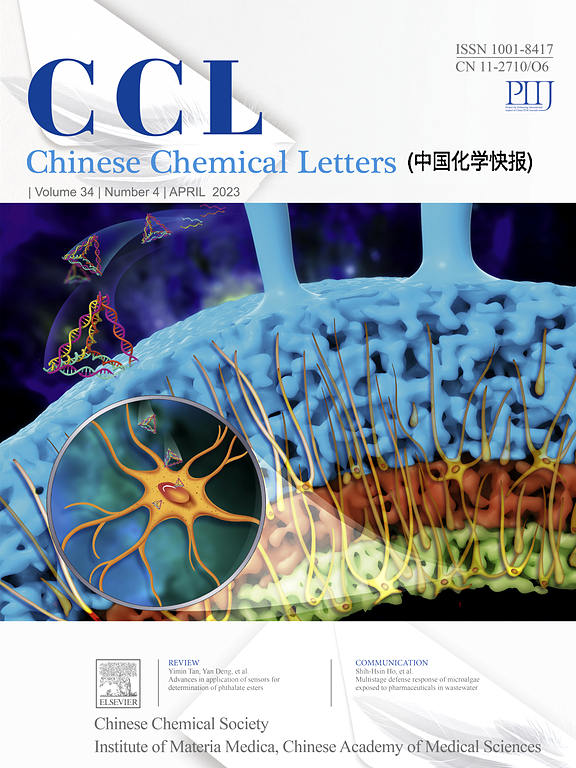Microenvironment regulation of copper sites by chelating hydrophobic polymer for electrosynthesis of ethylene
IF 9.4
1区 化学
Q1 CHEMISTRY, MULTIDISCIPLINARY
引用次数: 0
Abstract
Molecular catalysts can effectively steer the electrocatalytic acetylene semihydrogenation into ethylene, but realizing high Faradaic efficiency (FE) at industrial current densities remains a challenge. Herein, we report a ligand engineering strategy that utilizes polymeric N‑heterocyclic carbene (NHC) as a hydrophobic ligand to modulate the microenvironment of Cu sites. This polymeric NHC imparts appropriate hydrophobic properties for the chelated Cu sites, thereby moderating the H2O transport and enabling easy access of acetylene. Consequently, the polymeric NHC chelated Cu exhibits an FEethylene of ∼97% at a current density of 500 mA/cm2 in a flow cell. Particularly in a zero-gap reactor, the FEethylene consistently exceeds 86% across current densities from 100 mA/cm2 to 400 mA/cm2, reaching an optimal FEethylene of 98% at 200 mA/cm2 and achieving durable operation for 155 h at 100 mA/cm2. This work provides a promising paradigm to regulate the microenvironment of molecular catalysts for improving electrocatalytic performances under industrial current densities.

通过螯合疏水聚合物调节用于乙烯电合成的铜位点微环境
分子催化剂可以有效地将电催化乙炔半加氢反应转化为乙烯,但在工业电流密度下实现高的法拉第效率(FE)仍然是一个挑战。在此,我们报道了一种配体工程策略,利用聚合N -杂环碳(NHC)作为疏水配体来调节Cu位点的微环境。这种聚合NHC赋予螯合Cu位点适当的疏水性,从而减缓了水的运输,使乙炔易于接近。因此,在流动电池中,当电流密度为500 mA/cm2时,聚合物NHC螯合Cu表现出约97%的fe乙烯。特别是在零间隙反应器中,fe乙烯在电流密度从100 mA/cm2到400 mA/cm2的范围内始终超过86%,在200 mA/cm2时达到98%的最佳fe乙烯,并在100 mA/cm2下实现155 h的持久运行。本研究为调节分子催化剂微环境以提高工业电流密度下的电催化性能提供了一个有希望的范例。
本文章由计算机程序翻译,如有差异,请以英文原文为准。
求助全文
约1分钟内获得全文
求助全文
来源期刊

Chinese Chemical Letters
化学-化学综合
CiteScore
14.10
自引率
15.40%
发文量
8969
审稿时长
1.6 months
期刊介绍:
Chinese Chemical Letters (CCL) (ISSN 1001-8417) was founded in July 1990. The journal publishes preliminary accounts in the whole field of chemistry, including inorganic chemistry, organic chemistry, analytical chemistry, physical chemistry, polymer chemistry, applied chemistry, etc.Chinese Chemical Letters does not accept articles previously published or scheduled to be published. To verify originality, your article may be checked by the originality detection service CrossCheck.
 求助内容:
求助内容: 应助结果提醒方式:
应助结果提醒方式:


